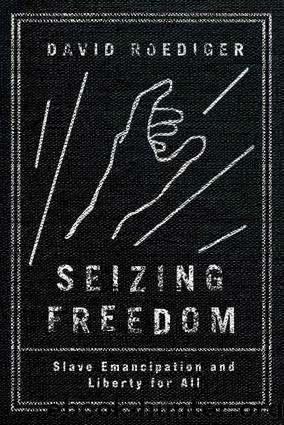Seizing Freedom : Slave Emancipation and Liberty for All (9781781686102) by Roediger David

Author:Roediger, David
Language: eng
Format: epub
Publisher: Random House Digital Dist
FROM THE EMANCIPATION OF SLAVES TO THE EMANCIPATION OF WOMEN
If any antebellum political demand rivaled that of immediate emancipation of slaves for sheer impossibility, it was that of women’s suffrage. When 300 women and a few feminist men met in a pioneering women’s rights convention at Seneca Falls, New York, in 1848, even they seemed ready to vacillate on the issue. Douglass editorialized that the “rights of animals” might have been more easily discussed in the United States. Conference organizer Lucretia Coffin Mott opposed resolving in favor of the right to vote as a move that would “make us ridiculous.” A variety of other apt priorities, including emphases on Indian rights and social radicalism, made many delegates not share Elizabeth Cady Stanton’s view of suffrage as a central issue. A stirring convention speech by Douglass, himself accustomed to demanding the impossible, endorsed suffrage and the resolution was adopted over opposition. Douglass’s fledgling newspaper The North Star led off its masthead in 1848 with the motto “RIGHT HAS NO SEX.” Stanton’s own husband, on the other hand, refused to attend the conference, protesting her forwarding of the suffrage resolution.43
The women’s rights meeting in Worcester, Massachusetts, in 1850, from which the movement subsequently dated itself, generated a controversy in which feminists debated how Lord Byron’s verse on self-liberation applied to them. The newspaper editor Jane Grey Swisshelm objected to the convention’s conjoining of abolitionism and women’s freedom. Herself an outspoken abolitionist, Swisshelm nevertheless turned Byron against the conflation of feminism and African-American rights: “We are told that those who would be free themselves must strike the blow; but the action of this Convention adds an improvement, and now those who would be free must strike for themselves and everybody else in bonds.” Hers was a minority position but it portended future debates on just how African Americans’ and women’s rights connected. At moments, Swisshelm urged that the long odds against abolition made it too large a burden for feminists to take on. At others, she suggested that the slave’s cause was “already before the people” and independent agitation was necessary for women to catch up. Mostly, she registered the seeming impossibility of both reforms, in her phrasing a pair of “little boats,” tempest-tossed, and unable to take on each other’s cargoes.44
The 1850s saw small headway for the little boat of women’s rights. An authorized history of women’s suffrage would later point to favorable attention by two state legislatures as evidence of forward motion, but the very idea of women voting nationally—and their recognition as fully able, rational republican persons fit to vote—remained a dream.45 As the movement unraveled financially, its prospects dimmed further, although at decade’s end two gifts from benefactors promised some stability. The first, from the real estate broker Francis Jackson, gave $10,000 to fight slavery and half that to support women’s rights. The second, from Boston merchant Charles Hovey, gave $50,000 to abolition and other causes “such as women’s rights, non-resistance, free trade, and temperance.” The Hovey funds prioritized
Download
This site does not store any files on its server. We only index and link to content provided by other sites. Please contact the content providers to delete copyright contents if any and email us, we'll remove relevant links or contents immediately.
| General | Discrimination & Racism |
Nudge - Improving Decisions about Health, Wealth, and Happiness by Thaler Sunstein(7615)
iGen by Jean M. Twenge(5366)
The Fire Next Time by James Baldwin(5249)
Adulting by Kelly Williams Brown(4487)
The Hacking of the American Mind by Robert H. Lustig(4318)
The Sports Rules Book by Human Kinetics(4294)
The Ethical Slut by Janet W. Hardy(4173)
Captivate by Vanessa Van Edwards(3796)
Mummy Knew by Lisa James(3634)
In a Sunburned Country by Bill Bryson(3485)
The Worm at the Core by Sheldon Solomon(3435)
Ants Among Elephants by Sujatha Gidla(3417)
The 48 laws of power by Robert Greene & Joost Elffers(3025)
Suicide: A Study in Sociology by Emile Durkheim(2973)
The Slow Fix: Solve Problems, Work Smarter, and Live Better In a World Addicted to Speed by Carl Honore(2947)
Humans of New York by Brandon Stanton(2835)
The Tipping Point by Malcolm Gladwell(2827)
Handbook of Forensic Sociology and Psychology by Stephen J. Morewitz & Mark L. Goldstein(2660)
The Happy Hooker by Xaviera Hollander(2655)
